Case Study: How a Parts Factory Saved $200,000 Annually with a Mold Flipper
Turning over heavy molds, dies, or steel coils with an overhead crane is a common sight in many factories. It's also one of the most dangerous and inefficient processes. A single slip, a moment of misjudgment, and you're facing a damaged multi-thousand-dollar mold, a costly production shutdown, or worse, a serious injury to one of your team members. This daily risk quietly eats away at your bottom line through hidden costs and inefficiencies that many owners accept as "part of the job." But what if there was a way to eliminate this risk entirely and unlock massive savings in the process?
A parts factory saved $200,000 annually by installing a dedicated mold flipper. This saving came from four key areas: eliminating costs from damaged molds and products, reducing the labor required for turning operations from three workers to one, significantly decreasing production downtime during changeovers, and lowering the risk of costly workplace accidents and associated insurance premiums. This single piece of equipment transformed a high-risk, time-consuming task into a safe, fast, and predictable one-person operation.
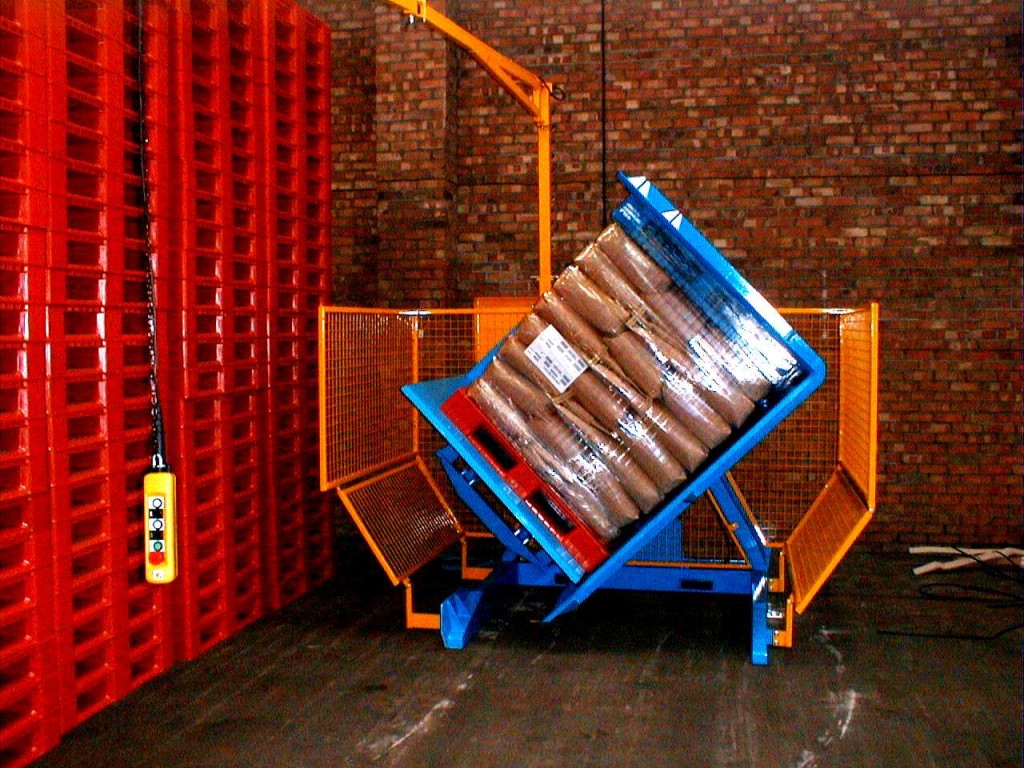
I know a figure like $200,000 a year sounds substantial. As an engineer and a factory owner myself, I am naturally skeptical of such claims. I believe in numbers and tangible results. So, let's break this down together. I want to walk you through the same analysis I would conduct for my own factory or for a client like you. We will look at how this machine works, where the savings truly come from, and how it can be a strategic asset, not just a piece of equipment, for a business like a modern steel mill.
What exactly is a mold flipper and why is it crucial for heavy industries like steel manufacturing?
Many factory owners I talk to have been using cranes and chains to flip heavy parts for decades. They see it as a standard operating procedure that, while not perfect, gets the job done. But this "good enough" mindset is a trap. It makes you blind to the constant, low-level drain on your resources. You accept the slow changeover times, the occasional product dings, and the constant underlying safety risk as normal business costs. A dedicated machine like a mold flipper is a direct challenge to that old way of thinking. It's not a luxury; it's a fundamental tool for achieving the level of safety and efficiency required to compete today.
A mold flipper is a heavy-duty machine designed specifically to turn over large, heavy objects like molds, dies, or steel coils safely and efficiently. It typically uses a powerful hydraulic or electromechanical system to rotate a load by 90 or 180 degrees on a stable platform. This equipment is crucial for steel manufacturing because it directly protects valuable assets, ensures the safety of your personnel, and dramatically speeds up critical processes like maintenance and production changeovers, which boosts your overall plant efficiency and output.
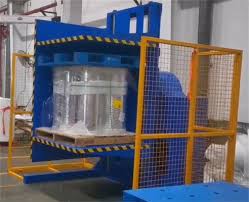
How a Mold Flipper Provides Controlled Power
Let's think about the physics. When you lift a 10-ton mold with an overhead crane, it's a suspended load. It can swing. The chains can shift. The center of gravity is high and unstable. It requires immense skill from the crane operator and perfect coordination with riggers on the ground to manage this process safely. A small error in judgment can lead to a catastrophe.
A mold flipper, on the other hand, secures the load to a solid, stable table. The entire movement is controlled and contained within the machine's strong C-shaped frame. The rotation is smooth, predictable, and slow. The center of gravity is kept low and stable throughout the entire process. It's the difference between balancing a ball on your finger and rolling it across a table. One is inherently risky and requires constant correction; the other is inherently stable and safe.
Comparing Methods: Crane vs. Mold Flipper
The argument for a specialized machine becomes very clear when you compare it directly to the traditional method. I've seen this comparison play out in countless factories, including steel mills handling massive coils and dies. The difference is not small; it is transformative.
| Feature | Overhead Crane + Chains | Dedicated Mold Flipper |
|---|---|---|
| Safety | High risk. The load can slip, swing, or drop. High potential for crush injuries. | Extremely high safety. The load is secured. Movement is controlled and predictable. |
| Efficiency | Very slow. Requires careful rigging, slow lifting, and manual positioning. | Very fast. A typical cycle takes only a few minutes. |
| Damage Risk | High. Chains and hooks can easily scratch, dent, or damage molds and coils. | Negligible. The load rests on a flat, often protected, surface. |
| Precision | Low. Difficult to place the flipped object accurately without adjustments. | High. The object is returned to a precise position, ready for the next process. |
| Manpower | High. Typically requires 2-3 people (crane operator, riggers/spotters). | Low. A safe, one-person operation. |
| Floor Space | Requires a large, clear area for the swinging load and personnel. | Compact footprint. Frees up valuable floor space for production. |
For a steel mill owner like Javier, these points are not just theoretical. They relate directly to his daily challenges. Faster die changes for stamping presses mean more uptime. Safely flipping a steel coil for quality inspection without damaging it means less scrap. Freeing up the main overhead crane from this routine task allows it to be used for more critical lifts, removing a major bottleneck in the plant.
How does a mold flipper directly address safety concerns and reduce labor costs?
Every factory owner I know shares the same primary concern: the safety of their people. An accident is the worst thing that can happen in a plant. It goes beyond the direct financial costs of shutdowns, investigations, and compensation claims. It affects morale, damages your company's reputation, and takes a profound human toll. The old approach was to train people to be more careful. The modern, engineering-based approach is to design the risk out of the process entirely. A mold flipper is a perfect example of engineering a hazard away.
A mold flipper directly addresses safety by completely eliminating the need for risky crane lifts or manual pushing and pulling to turn heavy loads. This mechanical solution prevents the most common types of accidents, like crushing or pinching injuries. At the same time, it reduces labor costs by converting a high-skill, multi-person task into a simple, safe, one-person operation. This frees up your skilled crane operators and riggers to perform more value-added work elsewhere in the plant.
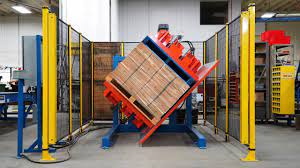
Engineering a Safer Workplace
The most significant impact of a mold flipper is on safety. Let’s be very direct about the risks of using a crane for this job. You have a multi-ton object suspended in the air. The only things holding it are chains and slings, which are subject to wear and tear. The load can, and does, shift. This creates a large danger zone around the operation where anyone can be struck by a swinging load or crushed if it falls. I have seen near-misses that would make your hair stand on end. These are the incidents that don't make it into the official reports but keep a plant manager awake at night.
A mold flipper contains the entire operation. The load is placed on the machine at ground level. Safety features like light curtains or physical guards can create an exclusion zone, automatically stopping the machine if someone gets too close. The operator stands at a safe distance, controlling the entire process with a simple push-button pendant. You are not relying on human judgment in a high-stress situation. You are relying on a machine designed for one purpose: to perform this specific task safely and reliably, every single time. This is how you fulfill your duty of care to your employees and comply with increasingly strict government safety regulations.
A Clear Calculation of Labor Savings
The safety benefits alone are often enough to justify the investment. But the financial case is just as strong. Let's look at a simple labor cost breakdown.
To flip a large mold with a crane, you typically need:
- 1 certified crane operator
- 2 riggers or spotters on the ground
Let's assume this process, from rigging to flipping to un-rigging, takes 20 minutes. If you flip 5 molds per day, that's 100 minutes of work for a 3-person team. That equals 300 person-minutes, or 5 person-hours, spent on this task every day.
Now consider a mold flipper. The process is:
- 1 forklift driver or operator
The operator places the mold on the flipper, walks to the control panel, and presses a button. The flip takes 2-3 minutes. The entire process, including loading and unloading, might take 5 minutes. To flip the same 5 molds per day, you need just 25 minutes of one person's time.
The savings are immediate and obvious. You have reduced the labor time for this specific task by over 90%. More importantly, you have freed up your highly skilled crane operator and riggers. They are no longer tied up with this repetitive, low-value task. They can now focus on more complex lifts that genuinely require their expertise, improving the workflow across the entire factory.
What is the real ROI of a mold flipper beyond the initial investment?
When a CEO or factory owner looks at purchasing new equipment, the first question is always about the return on investment (ROI). It's easy to look at the initial purchase price as a major expense. But a smart leader, especially one with an engineering background, knows that the initial cost is only one part of the equation. The real analysis involves looking at the total cost of your current method—including all the hidden expenses—and comparing it to the new solution. Often, the cost of not investing in the right equipment is far higher than the price of the machine itself.
The real ROI of a mold flipper extends far beyond simple labor savings. It delivers a powerful financial return by completely eliminating the high cost of damaged products and molds, dramatically increasing production uptime by slashing changeover times, and enabling predictive maintenance programs. These combined benefits often lead to a full payback period of less than 18 months, making it one of the most effective capital investments a factory can make.
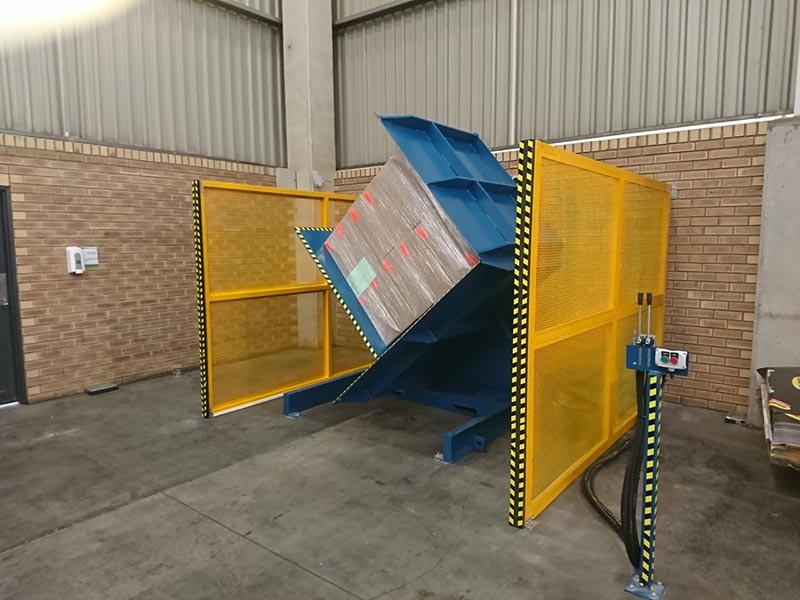
A Practical ROI Calculation
Let's use the example from the case study title to put some real numbers on this. How did a factory save $200,000? It wasn't magic. It was a careful accounting of all the costs they eliminated.
| Cost Savings Category | Old Method (Annual Cost) | New Method (Annual Cost) | Annual Savings |
|---|---|---|---|
| Labor Costs (3 workers vs. 1, 2 hrs/day) | $75,000 | $25,000 | $50,000 |
| Damaged Molds/Dies (1-2 per year @ $50k-$75k each) | $100,000 | $0 | $100,000 |
| Production Downtime (2 hours per incident, plus slow changeovers) | $50,000 | $2,000 | $48,000 |
| Total Annual Savings | $198,000 |
This is a conservative estimate. The cost of a damaged mold can easily be much higher, especially for custom or complex steel industry dies. The cost of downtime in a high-capacity plant can be thousands of dollars per hour. This calculation doesn't even include indirect savings from lower insurance premiums or avoiding fines from safety violations. When you present the numbers this way, the initial investment in a machine that might cost $50,000 to $150,000 is no longer an expense; it's a clear and logical business decision with a rapid payback.
Uptime: The Hidden Profit Multiplier
For a high-volume facility like a steel mill, uptime is everything. Every minute the production line is stopped is lost revenue. Javier's goal of 95% equipment effective running time is ambitious and requires attacking every source of delay. Mold or die changeovers are a major source of planned downtime.
If a changeover using a crane takes 60 minutes, and a changeover using a mold flipper takes 10 minutes, you save 50 minutes on every cycle. If you perform one changeover per day, that's over 200 hours of extra production capacity you gain per year. What is the value of 200 hours of production for a 2-million-ton steel plant? The number is massive. This is how a simple piece of handling equipment directly contributes to the high-level goal of increasing capacity utilization. It also helps achieve another goal: deploying predictive maintenance. By making it fast and safe to access machinery components for inspection and service, the flipper encourages proactive maintenance instead of waiting for a breakdown.
How do we choose the right mold flipper and integrate it into an existing production line?
Once you are convinced that a mold flipper is the right solution for your plant, the next challenge emerges: choosing the correct machine and integrating it smoothly into your workflow. This step is critical. Buying the wrong piece of equipment can be a costly mistake. A machine that is undersized for your heaviest loads is useless and dangerous. A machine that is oversized is a waste of capital and valuable floor space. And poor integration can create new bottlenecks, defeating the entire purpose of the investment. This is why the selection process should not be about buying a product. It should be about finding a partner who will help you engineer a complete solution.
Choosing the right mold flipper starts with a detailed analysis of your specific load characteristics, including maximum weight, dimensions, and center of gravity. Successful integration requires careful planning of the physical workflow, floor space allocation, and utility connections. The most effective approach is to work with an experienced supplier like us at SHJLPACK. We provide a total solution, guiding you from the initial on-site analysis and machine customization all the way through to installation, training, and long-term support.
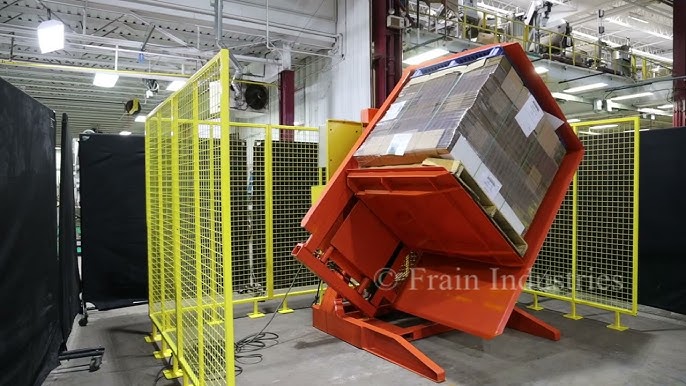
Key Selection Criteria for Your Machine
As an engineer, I believe in making decisions based on data. When selecting a mold flipper, you need to answer a few key technical questions. This is the checklist I use with my clients:
- Load Capacity and Dimensions: This is the most important factor. You need to identify the absolute heaviest and largest mold, die, or coil you will ever need to flip. The machine's capacity must safely exceed this maximum. We always build in a safety margin.
- Flipping Angle: Do you need a 90-degree flip for inspection and maintenance, or a full 180-degree flip to turn a part completely over? A 90-degree flipper is simpler and more common, but a 180-degree machine might be necessary for certain processes.
- Drive System: You typically have two choices: hydraulic or electromechanical. Hydraulic systems offer immense power and are very robust, making them ideal for the heaviest loads in harsh environments like a steel mill. Electromechanical screw-jack systems offer higher precision, cleaner operation (no risk of oil leaks), and lower energy consumption, which is ideal for food-grade or clean-room environments.
- Control System and Integration: Do you need a simple, stand-alone push-button control? Or do you want the machine to be integrated into your plant's MES or central control system? A modern PLC-based control can provide data on cycle times and usage, supporting your digitalization goals.
- Safety Features: We never compromise on safety. Standard features should include emergency stops, and you should consider options like safety light curtains, pressure-sensitive mats, or physical guarding to meet your plant's specific safety standards.
Planning for a Smooth Integration
A new machine should solve problems, not create them. Proper integration planning is essential. This is a collaborative process between your team and ours.
- Workflow Analysis: First, we map out your current process. Where is the part coming from? Where does it need to go after being flipped? We identify the ideal location for the flipper to minimize travel time and eliminate bottlenecks. Often, this means placing it right next to a large press or a maintenance bay.
- Layout Planning: We consider the physical footprint of the machine and the space required for a forklift or crane to load and unload it. We help you design a dedicated work cell that is both efficient and safe. This often frees up the large, open space that was previously needed for risky crane operations.
- Foundation and Utilities: We provide clear specifications for the foundation. While many flippers can be installed on a standard reinforced concrete floor, the heaviest models may require a dedicated footing. We also specify the required electrical or hydraulic power connections.
This is the "total solution" approach. It's not about shipping you a machine in a crate. It's about ensuring that machine delivers maximum value from day one.
My Insight as an Engineer and Factory Owner
I remember vividly when I was a young engineer working on the factory floor. I watched two men trying to flip a heavy steel component using an overhead crane and nylon slings. One of the slings slipped. The component didn't fall, but it swung violently, missing one of the workers by inches. Everyone froze. In that moment, I realized that relying on human skill alone for such a dangerous, repetitive task was fundamentally flawed. It wasn't a matter of if an accident would happen, but when.
That experience, and others like it, is why I founded SHJLPACK. It wasn't just to start a business. It was to solve the real-world problems I saw and experienced every day. My mission became about using good engineering to create safer, more efficient workplaces.
When I look at the challenges a leader like Javier faces—managing high energy costs, dealing with aging equipment, and pushing for digitalization—I see a reflection of my own journey. These are not isolated problems. They are all connected. An old, inefficient process like using a crane to flip molds wastes energy, puts stress on aging equipment, and is a barrier to creating the kind of data-rich, automated environment you're striving for.
A mold flipper, or a coil tilter, is more than just a piece of hardware. It's a strategic move. It's a statement that you are prioritizing safety. It's a tool that directly attacks inefficiency and downtime. It's a step towards a more modern, more predictable, and more profitable operation. My goal with SHJLPACK isn't just to sell machines. It's to share the knowledge I've gained over 25 years to help other leaders build stronger, safer, and more successful businesses. We are here to be your partner in finding those solutions.
Conclusion
A mold flipper is not just a machine. It is a strategic investment in safety, efficiency, and long-term profitability for any modern factory serious about its future.


